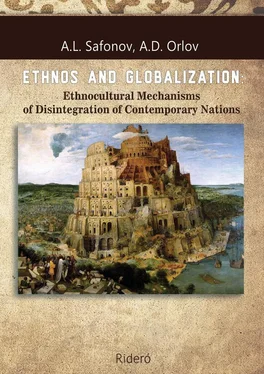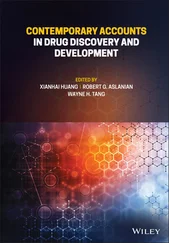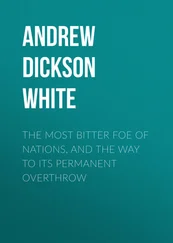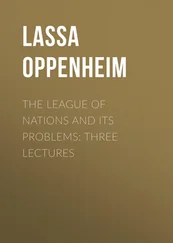Liberalization and commercialization engender the degradation of extremely important – especially long-term – non-commercial spheres of social life (science, culture, education, marriage), that make up an essential part of human existence.
It is quite likely that crises in the global economy and internal affairs of certain states that are prompted by liberalization, commercialization and deregulation will in the future logically lead to the movement in reverse – namely to deliberalization and regionalization, as well as to the reinvigoration of such social institutes as nation states and ethnicities.
In any case, we see the example of Roosevelt’s New Deal that came to replace the decade of post-war liberalism of the twentieth century. Many other examples of successful deliberalization and deprivatization exist, above all the creation of the European model of the welfare state 145 145 Erhard, L. Half a Century of Thoughts: Articles, Speeches / Translated from German by A. Andronov, V. Kotelkin, T. Rodionova, N. Selezev. – M.: Nauka, 1996. – 606 p.
and the construction of a whole range of viable models of socialism and compromise social models based on a number of civilizations and cultures.
The economy has seen global changes linked to the appearance and growth of transnational corporations and globalized banking and financial structures.
Manufacturing has long since ceased to be merely national. It is becoming more and more transnational: only some of the work on a certain product is done in any given country, while the item has to go through a long process from raw material to completeness through manufacturing cycles in many countries. Transnational corporations deal with this type of manufacturing, but they do not focus on one activity or one product.
In the 1990s, the joint sales of 500 largest global transnational corporations were responsible for over a quarter of the world’s GDP, over one-third of global exports of the manufacturing industry, three-quarters of the trade in goods, and four-fifths of the trade in technologies. At the same time, about 40 per cent of global trade happened within transnational corporations. 146 146 Lisichkin, V. A., Shelepin, L. A. Global Empire of Evil. M.: Krymsky Most-9D, Forum, 2001. – 448 p.
However, it follows from these figures that only about 30 per cent of the economy is globalized, considering national markets, including several exclusively local but very important economy sectors, such as housing, utilities and infrastructure. At the same time, only the high-technology sector of the economy, which is related to basic sustenance, has been globalized alongside finance and its specifics.
1991 may be considered the watershed moment of the update of another component of globalization – the global crisis of resources and demographics, which was officially declared a global threat by the experts of the Club of Rome. The reports of this elite group of experts ordered by the UN 147 147 Meadows, D., Meadows, D., Randers, J. The Limits to Growth. M.: Progress, 1994. – 304 p.
were created in correlation with representatives and structures of the global elite. Therefore, the reports of the Club of Rome and its members are not exactly independent research, but rather the position of global elites in relation to the problem of a global crisis of resources and demographics camouflaged as research and illustrated by certain scientific computations. The policy of the “nucleus’ states and international political and financial institutions (UN, IMF, World Bank, etc.) is based thereon.
The leading cause of the crisis of resources and demographics was the “baby boom’ in non-industrialized countries on the global periphery (South, “third world’ countries), coupled with the growing depletion and, by consequence, the growing prices of natural resources. These days, the baby boom in countries on the global economic periphery has led to a migration tsunami, irreversibly destroying the ethnocultural integrity of European nations and Russia.
On the cusp of the 1990s, the growth of the population of the “third world’ exhausted the results of the green revolution – the technological modernization of the agricultural sphere of the third world, initiated by industrialized countries and meant as a means of social rehabilitation of former colonies. The end to the growth of productivity against the backdrop of the growth of population and conversion of arable lands into space used for other purposes resulted in lower per capita grain production as an objective indicator of the lower food security and life standard in general. 148 148 Borlaug, Norman E. The Green revolution // Ekologiya i zhizn’. 2000. №4 – p. 37—42.
The stabilization of the fast pace of economic growth typical of the first stage of the industrialization led to the population growing faster than the GDP, which stamped out newly industrialized countries’ hopes for a new consumption level characteristic of the countries in the old industrialized and financial nucleus of the global system. 149 149 Zhantiyev, D.R. Contemporary global economic system and Middle East politics of Russia on the cusp of XXI century. Part of cultural identity and globalization: reports and speeches – 5 th International Philosophical Symposium “Dialogue of Civilizations: East-West” April 27—28, May 4—5, 2001. RUDN Publishing House – p. 27—31.
As a result, the contradiction between the limited resources and the unlimited growth of population in countries with a traditional model of demographic growth left the confines of the third world and took on a new quality, becoming a global problem. At the same time, the crisis of resources and demographics is not only manifested as a growing lack of balance between the global population and world’s resources, paving the way for a global catastrophe, even based on an average model from the Club of Rome. The inconsistency of the demographic development, which put demographic and migration pressure on the countries at the nucleus, as well as on the countries of the industrialized periphery (for example, Russia) is no less dangerous.
How many billion men can our planet feed if the population of the Earth may reach eight billion by as early as 2020? This issue is becoming a matter of life and death for billions, rather than millions, of the inhabitants of the world’s periphery and half-periphery, who do not “fit in” with the competing projects of a post-crisis lifestyle.
At the end of the 1960s, Robert McNamara, the Secretary of Defence in Kennedy’s administration, who later became, characteristically, the President of the World Bank, spoke about the threat of the “demographics explosion” and impending lack of resources. In fact, it was McNamara who brought the term “demographics explosion” into the political vernacular.
At the beginning of the 1970s, a secret directive on the policy on global population elaborated by a similarly famous figure, Henry Kissinger, was adopted by the United States National Security Council, wherein the policy on “containing’ the growth of the global population was equal in importance to the defence programmes in terms of US national security.
Similar reports on the inevitability of the deficit of resources and ecological crisis were received by other expert groups, which is not surprising: the problem of the finite nature of the global mineral and biological resources was up in the air: in particular, it was clearly formulated within Vernadsky’s theory of geospheres. The problem of the limits of growth was posed and solved in the USSR largely independently from the West and based on own scientific potential.
In particular, Nikolay Timofeev-Ressovsky suggested to academic Moiseyev 150 150 Moiseyev, N. N. Long Time until Tomorrow. M.: MNEPU Publishing House, 1997. – 309 p.
, a member of the Computation Centre of the USSR Academy of Sciences, the creation of a mathematical model allowing estimation of how many billion men may fit into natural ecological cycles of the Earth at the current level of technologies. Essentially, the wording of the task and its solution were comparable to the results obtained by experts of the Club of Rome.
Читать дальше












